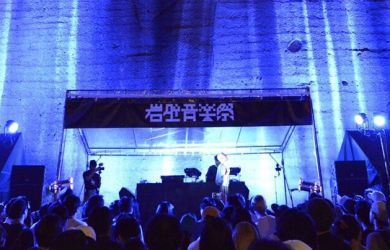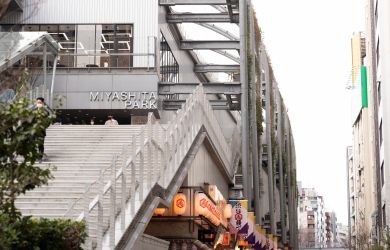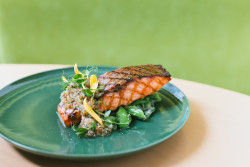
Originally published on metropolis.co.jp on March 2012

It was a few years ago, when I saw an ad for “taiko aerobics” classes in Harajuku, that I knew Japan’s traditional drum had hit the big time.
“There are lots of good drummers now,” grants taiko master Shuichi Hidano. “And women have actually come to outnumber men.”
Perhaps the world’s best-known taiko player—thanks to collaborations with the likes of Stevie Wonder—Hidano says women respond differently to an instrument that until recently was the sole preserve of men.
“Maybe it’s because they feel it in their wombs that they like it so much,” he offers. “Men feel it in their brains.”
It’s not a stretch to say that Hidano himself played a key role in the worldwide popularization of taiko. Leaving the renowned Kodo ensemble two decades ago, the burly drummer began a series of pioneering interactions with jazz and rock musicians.
“There wasn’t anybody collaborating outside taiko at the time,” he explains. “But I’d started out on the jazz drums, so it was natural for me.”
Hidano’s appearance with bands from Jamiroquai to Anthrax introduced the wider world to a drum that until recent decades was confined to Japanese shrines and festivals. But it came at the expense of his relationship with his sensei. “My elders were really angry at my cross-genre experiments,” he recalls. “They said, ‘That’s not taiko.’”
It’s a familiar story with the shamisen and shakuhachi—or any other ancient Japanese tradition. But this tale has a happy ending. “My way of doing things is becoming the norm,” Hidano says. “Young players support what I do. They say their sensei told me not to listen to Hidano, but they want to work with different musicians too.”
Hidano splits his time between touring and teaching what he claims to be 1,000 students. He tries to inculcate in them a willingness to think outside the box. “Because taiko is so simple, it can be used in many contexts. It always sounds great,” he says. “The conservative approach to taiko in Japan is boring. European and American taiko groups are actually more interesting these days.”
But even as he expands taiko’s boundaries, Hidano is thinking more about his place in tradition. “I’ve become interested in taiko pieces from hundreds of years ago,” he says. “One hundred and fifty years ago taiko was used only on special occasions, like kabuki. But then western entertainment entered Japan and the role of taiko was reconsidered. After 100 years, if what I do is considered traditional I would be really happy. If the collaborations I do are a lasting value it would be a dream.”
It seems the only thing preventing an even broader uptake of taiko is the sheer cost. The cheapest drums go for thousands of dollars and a top-of-the-line specimen made from Japanese zelkova wood by 400-year-old maker Asano Taiko in Kanazawa, up to a million dollars.
“When I went to Africa I was asked if all Japanese play taiko. I had to say no, only a very few can because they’re so expensive,” Hidano laughs ruefully. “I hope we can come up with cheaper drums so more young people can play.”
“Everyone responds to the drum—everywhere,” he concludes. “The world is one, and so is music. I think music has the power to change politics and create peace. This time will come. As long as we can pay for the taiko!”
Atsugi-shi Bunka Kaikan, Mar 4 (listing); Enoshima Special Stage, Mar 18 (listing); Yoyogi-Uehara Musicasa, Apr 7. www.hidashu.com





